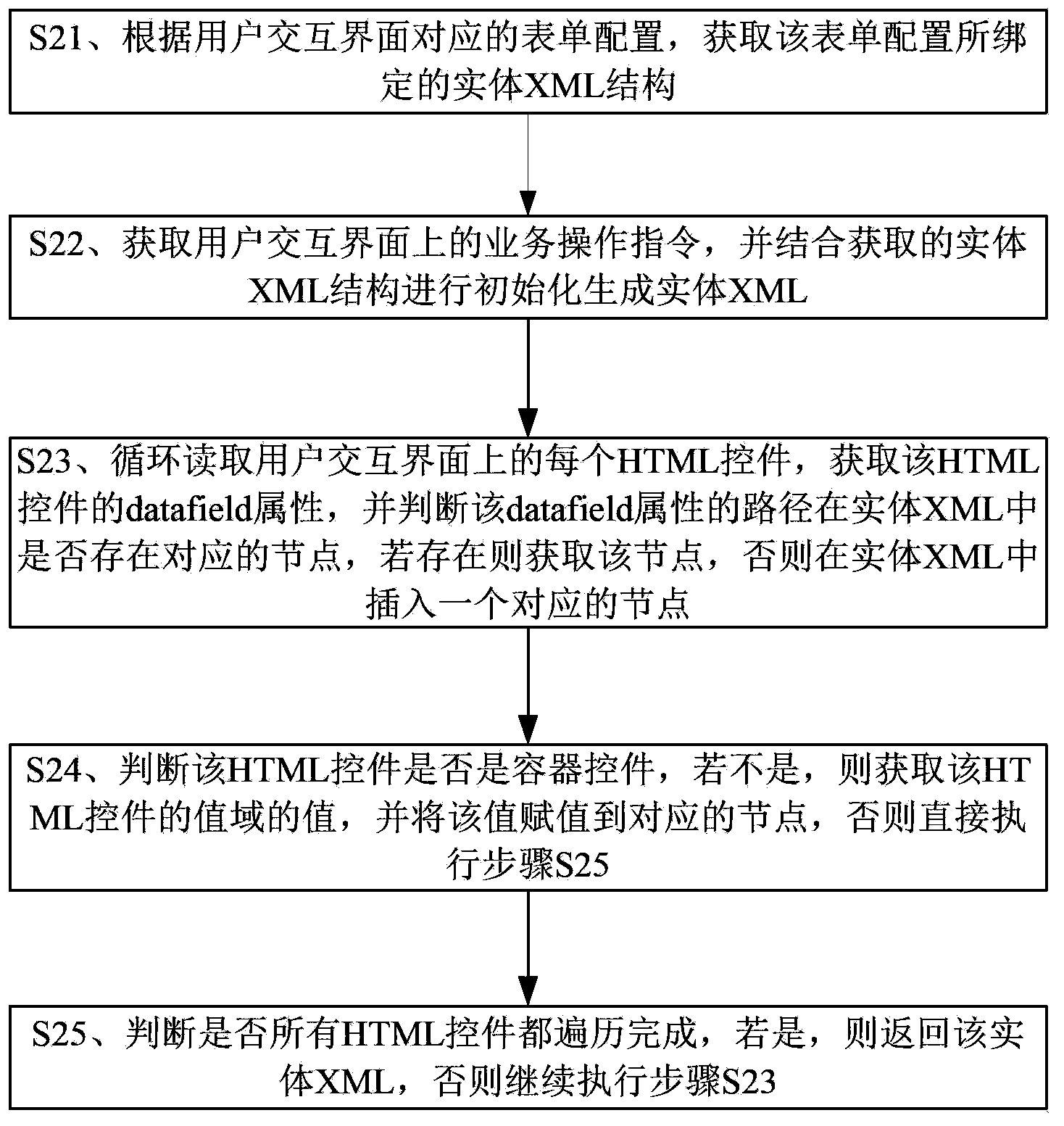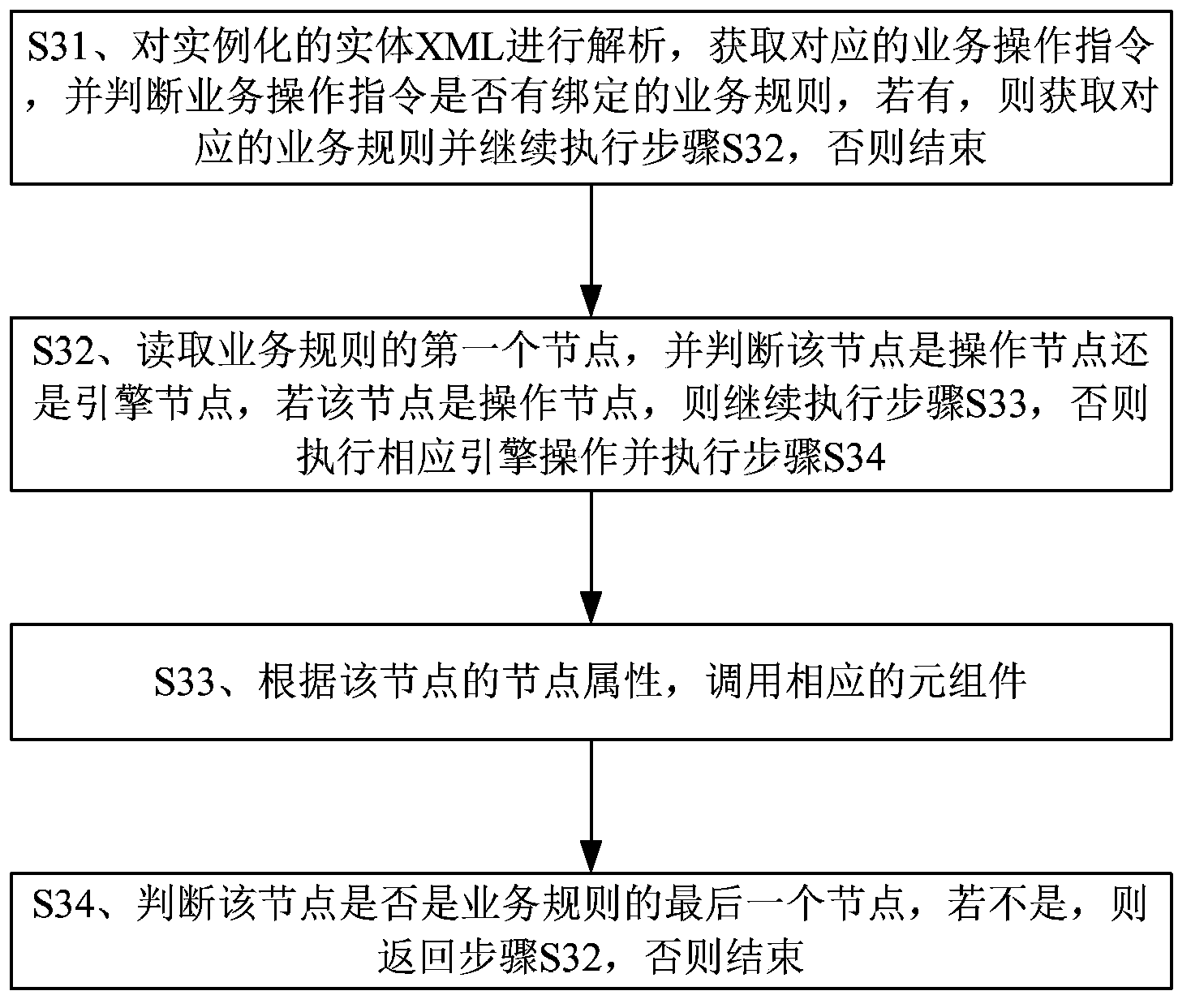Service rule automatic-calling method based on XML
An automatic call and business technology, applied in the direction of program control devices, etc., can solve problems such as monotonous development methods, high design capability requirements, and low development efficiency, and achieve high development efficiency, high flexibility, and high user-friendliness.
- Summary
- Abstract
- Description
- Claims
- Application Information
AI Technical Summary
Problems solved by technology
Method used
Image
Examples
specific Embodiment
[0064] A specific embodiment of the present invention is as follows:
[0065] An XML-based method for automatically invoking business rules, including:
[0066] S1. Process the URL requested by the user to generate a user interaction interface;
[0067] S2. Obtain input data of the user interaction interface and generate instantiated entity XML from business operation instructions on the user interaction interface, including:
[0068] S21. Obtain the corresponding form configuration according to the URL requested by the user, and after parsing the form configuration, call the corresponding interface HTML control to generate a user interaction interface;
[0069] S22. Acquire the business operation instructions on the user interaction interface, and combine the acquired entity XML structure to initialize and generate entity XML; the business operation instructions include saving, deleting, modifying and adding, etc., based on the user's interaction with the interface HTML cont...
PUM
 Login to View More
Login to View More Abstract
Description
Claims
Application Information
 Login to View More
Login to View More - R&D
- Intellectual Property
- Life Sciences
- Materials
- Tech Scout
- Unparalleled Data Quality
- Higher Quality Content
- 60% Fewer Hallucinations
Browse by: Latest US Patents, China's latest patents, Technical Efficacy Thesaurus, Application Domain, Technology Topic, Popular Technical Reports.
© 2025 PatSnap. All rights reserved.Legal|Privacy policy|Modern Slavery Act Transparency Statement|Sitemap|About US| Contact US: help@patsnap.com



